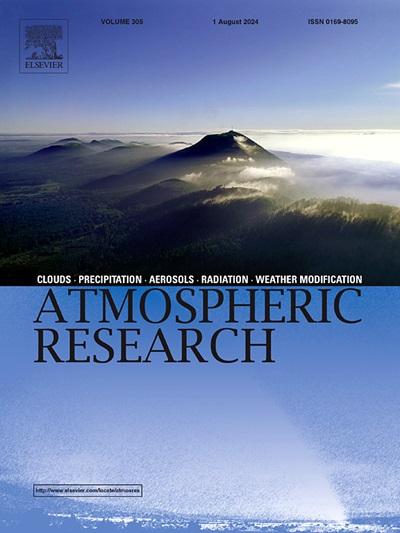Causality of compound extreme heat-precipitation events in Northeastern China
IF 4.5
2区 地球科学
Q1 METEOROLOGY & ATMOSPHERIC SCIENCES
引用次数: 0
Abstract
Under global warming, the occurrence of compound extreme weather and climate events has increased, resulting in profound ecological and societal damages. Understanding the forming mechanisms of these events is imperative for formulating effective mitigation and adaptation strategies. This research focuses on causality of the compound extreme heat and precipitation events (CEHPEs) in northeastern China. From 1961 to 2018, a total of 55 heatwave events occurred in this region, with 18 identified as the CEHPEs.
The formation of CEHPEs in northeastern China is closely related to the southeastward propagating quasi-barotropic anomalous anticyclone. As the center of the anomalous anticyclone approaches northeastern China, the associated descent reduces the cloud cover and increases downward shortwave radiation. The thus-heated ground increases the upward longwave radiation and sensible heat, predominantly warming the surface air and causing the heatwave. During the development of the heatwave, the increased lower-level moisture due to the enhanced surface evaporation and the increased column moist static energy due to the warming air temperature destabilize the atmosphere. When the anomalous anticyclone moves out of northeastern China after the heatwave, intense convection rapidly develops, resulting in extreme precipitation and completing the CEHPEs.
Comparison between the CEHPEs and the mere heatwave events is also conducted. The major difference resides in the zonal scale of the anomalous anticyclone. In the CEHPEs, the anomalous anticyclone has a small zonal scale and decays locally due to the advection by the climatological westerly acting on the zonal gradient of anomalous vorticity. In contrast, the zonal scale of the anomalous anticyclone in the mere heatwave events is much larger, which slowers the decaying due to the weaker zonal advection and thus impedes the convection development and extreme precipitation.
求助全文
约1分钟内获得全文
求助全文
来源期刊

Atmospheric Research
地学-气象与大气科学
CiteScore
9.40
自引率
10.90%
发文量
460
审稿时长
47 days
期刊介绍:
The journal publishes scientific papers (research papers, review articles, letters and notes) dealing with the part of the atmosphere where meteorological events occur. Attention is given to all processes extending from the earth surface to the tropopause, but special emphasis continues to be devoted to the physics of clouds, mesoscale meteorology and air pollution, i.e. atmospheric aerosols; microphysical processes; cloud dynamics and thermodynamics; numerical simulation, climatology, climate change and weather modification.
 求助内容:
求助内容: 应助结果提醒方式:
应助结果提醒方式:


